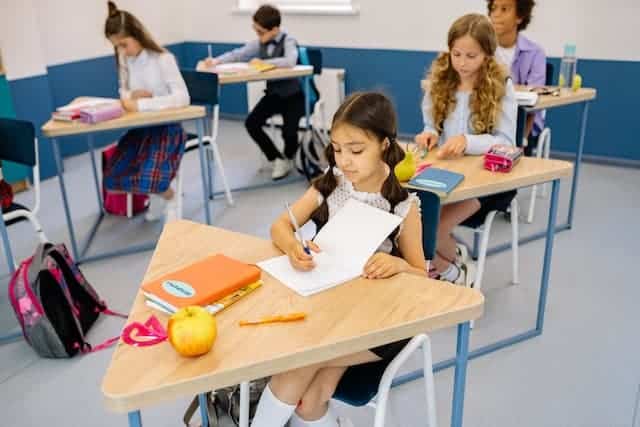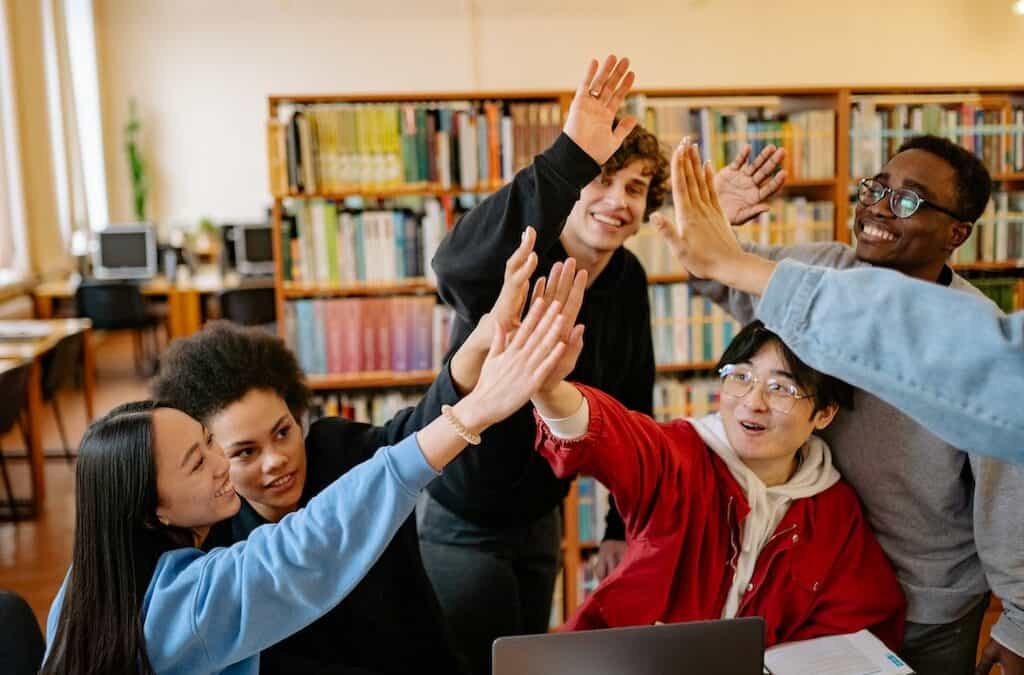If children leave school with a belief in their ability to successfully set then accomplish their goals, then their education has helped boost them towards success. Creating lessons that teach self-efficacy in the classroom can be some of the most valuable lessons that educators can provide. (GSE) We have created a guide for self-efficacy in teaching for elementary students.
Self-Efficacy in Teaching
Teaching self-efficacy in the classroom means showing students how to plan their actions while feeling confident in their ability to carry out their plans. (SERC) Using engaging tactics will reinforce a sense of self-determination and personal effectiveness.
Here are some things to consider when setting out to incorporate self-efficacy into a teaching curriculum. (TheEducationHub)
1. Create Opportunities that Capitalize on Successes
Few moments reinforce confidence like experiencing successes. Often children, because of fewer experiences in their lives, haven’t yet experienced as many independent successes. Therefore, beginning a habit of believing that they can succeed is a valuable lesson.
Practicing extra gestures of positive reinforcement for both minor and major achievements is a great opportunity to improve self-efficacy. (TeachStart) For example:
- Send children a letter or postcard praising them for their achievement.
- Create an award where students can nominate each other for achievements they recognize.
- Designate an achievement wall, where students can display their achievements for the class.
Creating a positive reinforcement feedback system goes a long way toward teaching children to believe in themselves.
2. Peer Modeling

Peer modeling is the practice of recognizing students who will step forward to provide clarity in classroom dialogue. Students who are asked to rise to the challenge may be viewed by their peers as someone to trust to have the right answers on a given subject. This can bolster a child’s confidence. Encouraging peer modeling in the classroom is a great tactic in building self-efficacy. This process must be approached carefully, but if done well it can be an effective aid to self-efficacy in education.
3. Goals and Feedback
Setting goals is a key skill. Implementing exercises where students have to set goals, follow through with them, and deal with windfalls and setbacks will give them a valuable skill to carry forward into the rest of their lives.
Educators should help students set and keep goals, and at the same time they should create feedback opportunities so that students can learn how to assess their plans. Additionally, this will help them learn how to make adjustments to goals where necessary.
Goal-setting journals, worksheets, visual boards, and goal-tracking sheets are all helpful tools. Read more about goal-setting for students here.
4. Self-Assessment

The practice of self-assessment isn’t always used in curricula driven by test scores and grades. If children are encouraged through classroom activities to develop a practice of self-assessment, asking themselves to make critical appraisals of the quality of their own work, it will serve them well for the rest of their lives. Using self-assessment sheets that are reviewed, or even simply put into an anonymous dropbox, can help students learn how to assess themselves on a given task. Self-assessment is a powerful tool in self-efficacy teaching.
5. Create Problem Solving Opportunities
Perhaps the single most effective skill any educator can impart to their students is the ability to problem solve. When students are empowered to approach every experience in life with a problem-solving mindset, they will be prepared to cope with many of the puzzles life throws their way.
An example of a problem-solving activity is the pyramid activity. (Wrike) Arrange students into groups and have them form a pyramid. Tell them they can only move two people but must reverse the pyramid.
6. Support Affirmation
A student’s self-confidence is affected by more than academic achievement. Since children spend a lot of time in school or engaging in school-related activities, it’s important for educators to help their students learn self-affirmations, as they pertain to parts of their personality other than academic achievement. Their social skills, hobbies like juggling or origami, their creative skills, or even their skills in being a good helper, are all examples. Self-affirmation is a large part of self-efficacy.
Teachers Teaching Self-Efficacy to Themselves
Kids learn a lot by example. Children are watching us all the time, and one of the most effective ways to teach them social and emotional learning skills is by living the lessons we wish to teach.
Educators who demonstrate self-efficacy will teach self-efficacy.
Educators who need help building lessons in social emotional learning can turn to Soul Shoppe SEL programs. Soul Shoppe encourages agency, self-confidence, self-affirmation, and other skills that prepare children for success in life. Click for more information on SEL Programs for Elementary Schools or our parent support programs.
You May Also Like:
Confidence-Building Activities For Kids


